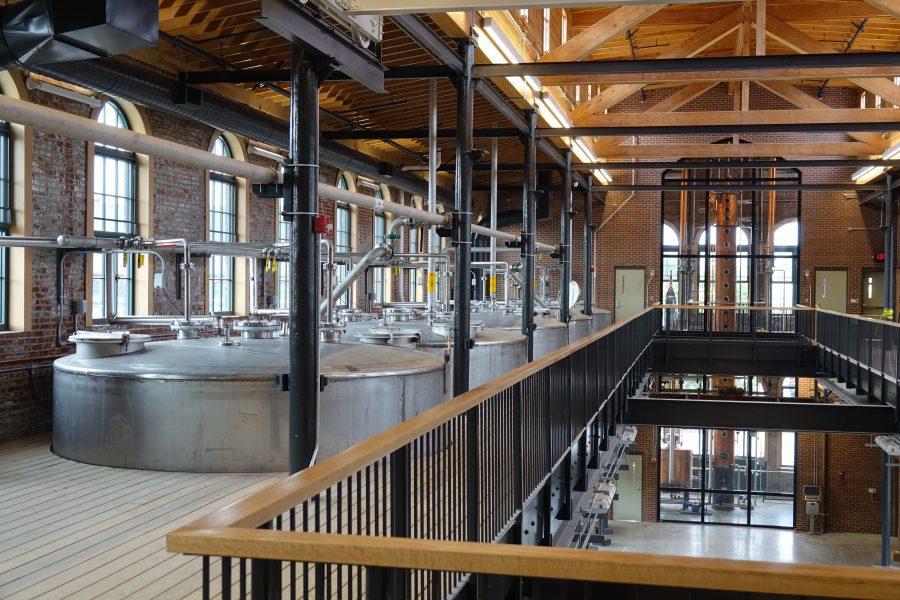VITOK Engineers Convert a 100+ Year Old Building into a Distillery Even the Angel’s Envy
All ArticlesAn article on VITOK’s distillery design of Angel’s Envy published on the Distillery Trail website July 2nd, 2018:
Distilleries come in all shapes, sizes and situations. Some distilleries start from scratch where everything is brand new from the rebar in the footer to the last nail in the roof. Some are built upon an old distillery that went from robust to rust when Prohibition snuffed out the life of most of our nation’s distilleries in the 1920s. Others may start with an old building that’s just looking for a new purpose and its chance to be reborn. In some cases, the historical location and preservation of the distillery site may actually become part of the story behind the brand. Such was the case with what is now Angel’s Envy Distillery.
No matter what your distillery journey, starting with an experienced engineer that knows how to balance the industrial, production and safety requirements of a distillery while including the tourism and guest experience of a modern distillery can make all the difference in the success of your project. Choosing the right engineering firm for the project can ultimately save a good bit of time and money.
Engineering for New Construction vs. An Existing Structure
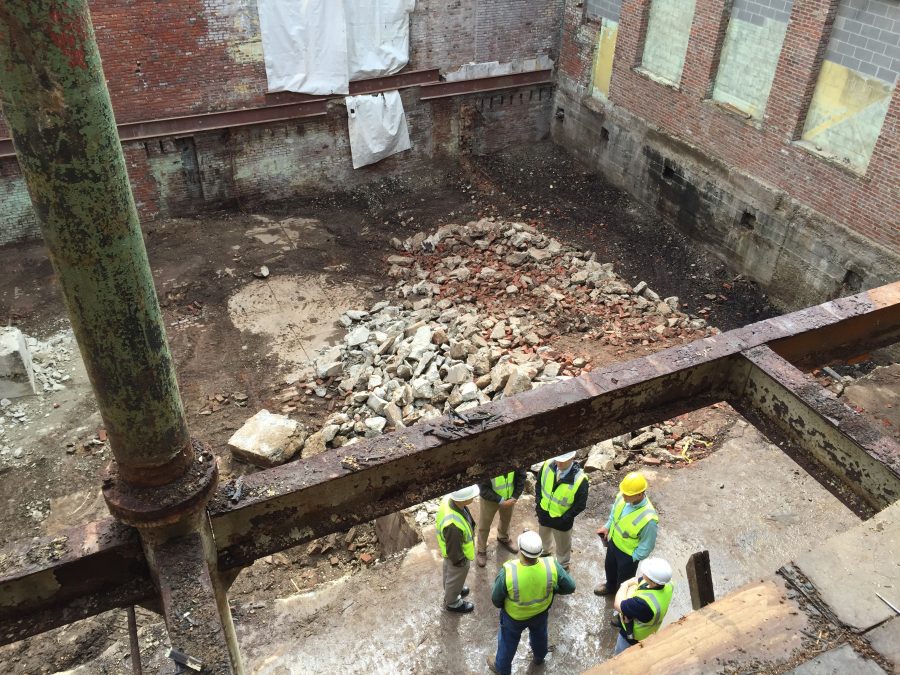
Many of these location variables factor into how the grain handling, fermentation, and distillation processes will fit into a new versus an existing facility. Critical decisions and subsequent planning go into determining the layout of the process while still maintaining the desired production capacity, product quality and safety considerations associated with any industrial facility. Existing and/or historical locations present a unique set of challenges, as does the need to consider accessibility of the distillery to tours and special events.
Conversion from Dead Tooling Factory to Angel’s Envy Distillery
The Angel’s Envy Distillery project is a great example of designing a high quality distillation process into a 106 year old building, while maintaining the vision that the owners desired. At the beginning of the design process, it was important to establish the need for the owners, architects and engineers to work together in order to get the desired practical and aesthetic result while still meeting all the safety, industrial and building requirements necessary for successful project completion. Without a doubt, a building of this size and age would certainly have some hidden “features”.
The first step for any distillery project is to consider the desired capacity of the distillery. Based on this information, VITOK Engineers can then calculate the size requirements for all of the vessels, pumps, and supporting equipment required to accommodate the process flow. The largest of these process components will also establish some of the heaviest loads on the structure of the building and the necessary clearances (space) required to meet local and national Code requirements.
Experience Tells Us, “Don’t Stress the Yeast.”
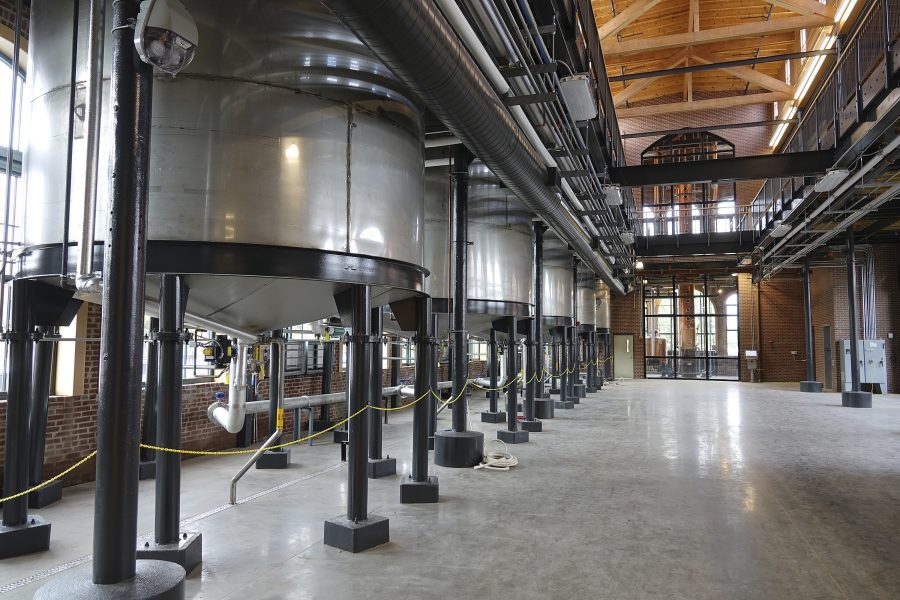
The VITOK Engineers will also understand how the various process vessels function to make a better tasting product. As an example, fermenters must maintain an environment that does not stress the yeast, which can be impacted by the geometry of the vessel design. The experienced distillery engineer will also know how to design this vessel to prevent foaming and ensure it can be sufficiently mixed.
Now that the largest elements of the process have been defined, VITOK Engineers can now begin the layout of the distillery. In this process, care must be taken to confirm that, among other things, any existing structure can support the process equipment and all necessary fire ratings are met. If the requirements are not met, then additional support, support replacement, foundations, or fire rated walls will need to be designed and installed.
In the case of the Angel’s Envy project, an unexpected and hidden basement “feature” was discovered shortly after the demolition phase began. This was a surprise to the crews and the designers, for it was not discovered in any of the preliminary site inspections. Fortunately, the space was never intended to be used. Since the cost was prohibitive to salvage this space and still support the vessel loads above, the space was backfilled to remove the structural concern.
What Comes 1st – The Distillation Equipment or the Roof?
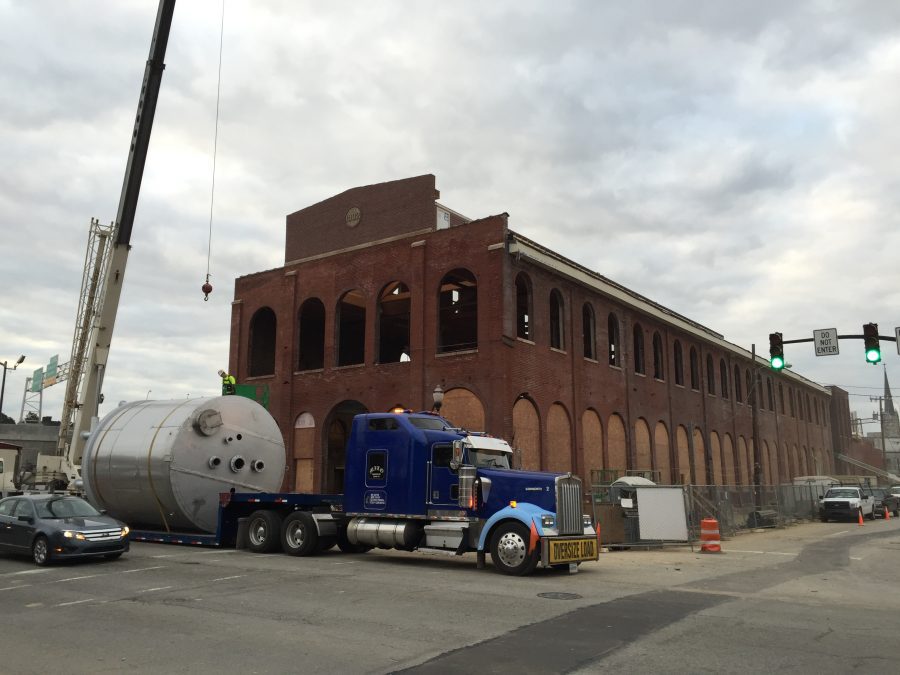
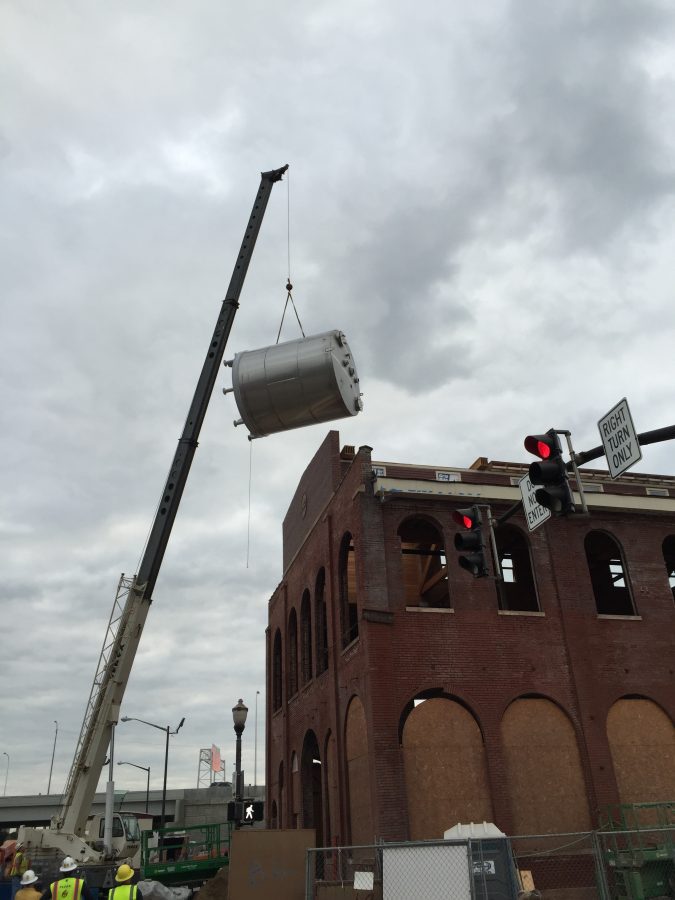
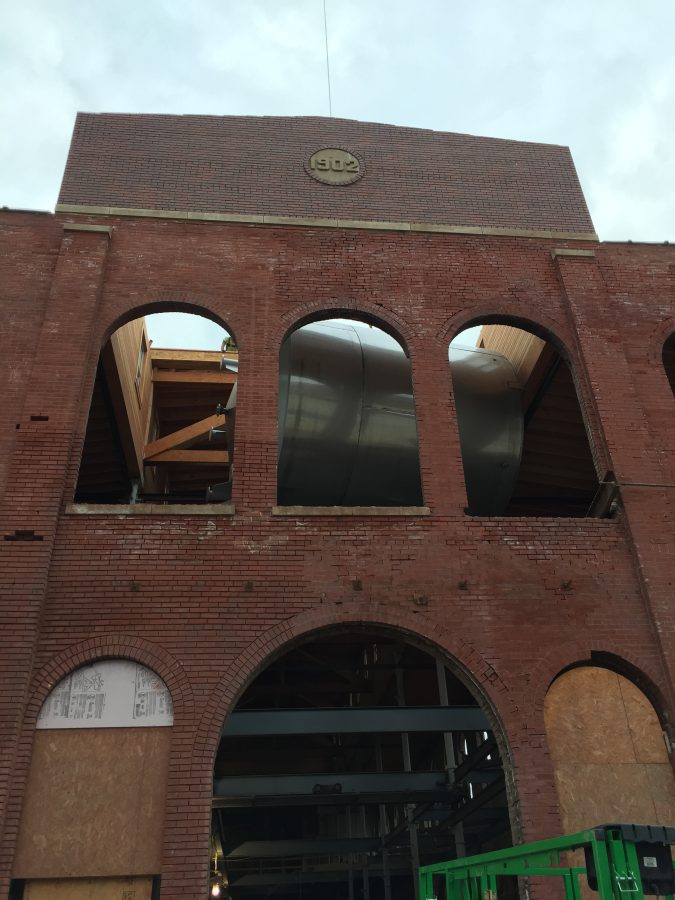
Throughout all of the analysis and support design, VITOK kept track of how the large vessels would finally enter the historic building and be located. Much of the process equipment certainly wasn’t going in through the front door, so at every step of the structural design and build process, the staging of the equipment had to be coordinated with the construction crews. For example, the fermenters and cooker were lowered through a temporary opening in the roof. Once they were on the floor, they were “skated” horizontally close to the final location and then set upright. In order to accomplish this, the roof support structural steel needed to be designed to
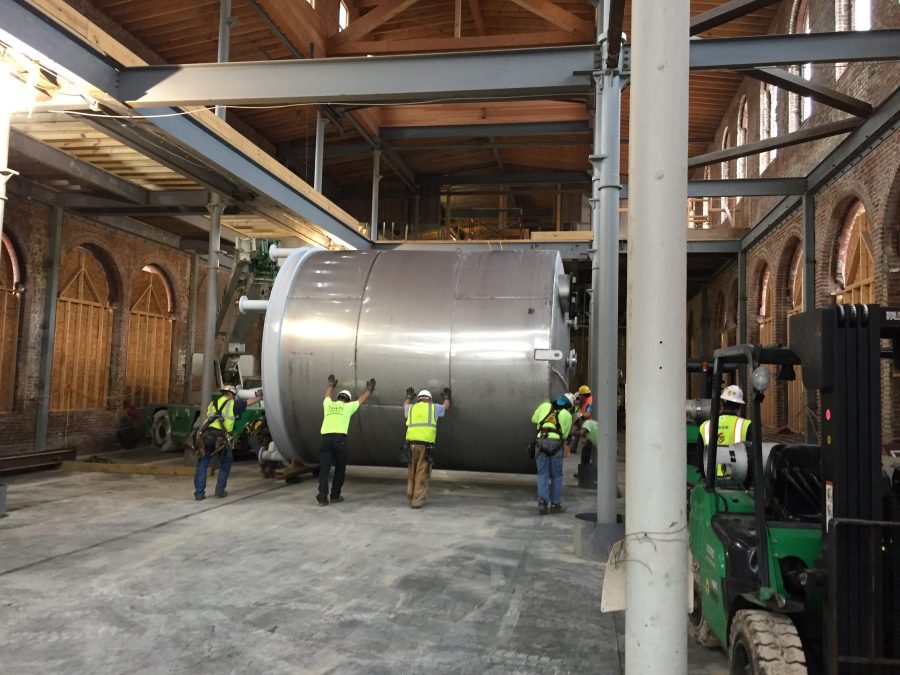
support the weight of the vessels, for once they were “skated” to the approximate location, they needed to be picked up and suspended by the roof steel in order to get the final legs attached and get the vessels properly placed.
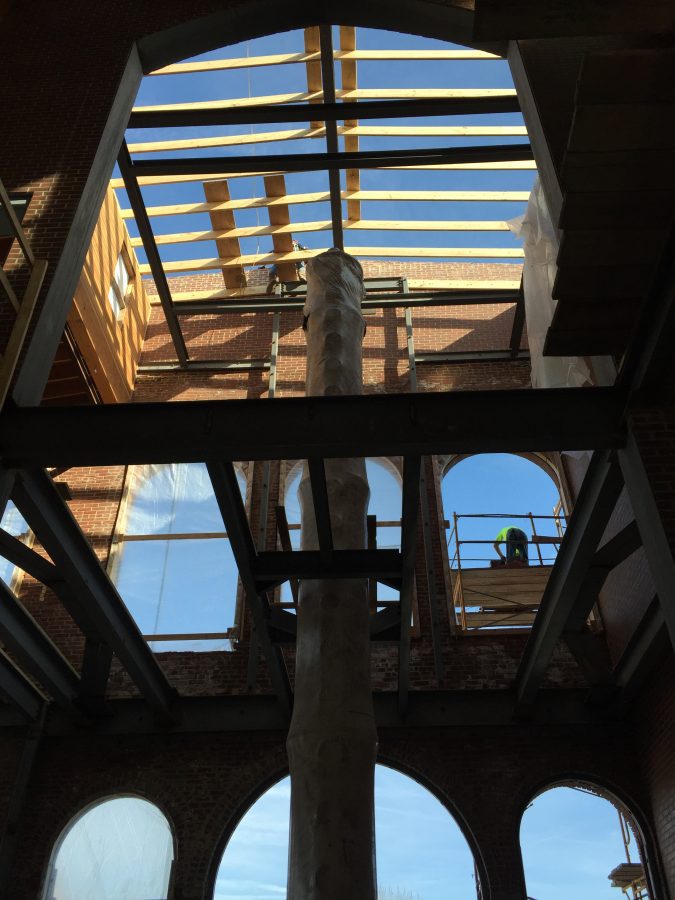
In some circumstances with existing structures, a 3D laser scan of the existing structure can be performed. You can see a sample below. This scan provides a very accurate model of the limiting structural interferences that can be used to virtually “fit” modeled vessels, boilers, power equipment, etc. into the existing space. The appropriate clearances can also be determined to ensure that the equipment can traverse the path from entry to its final location without interference.
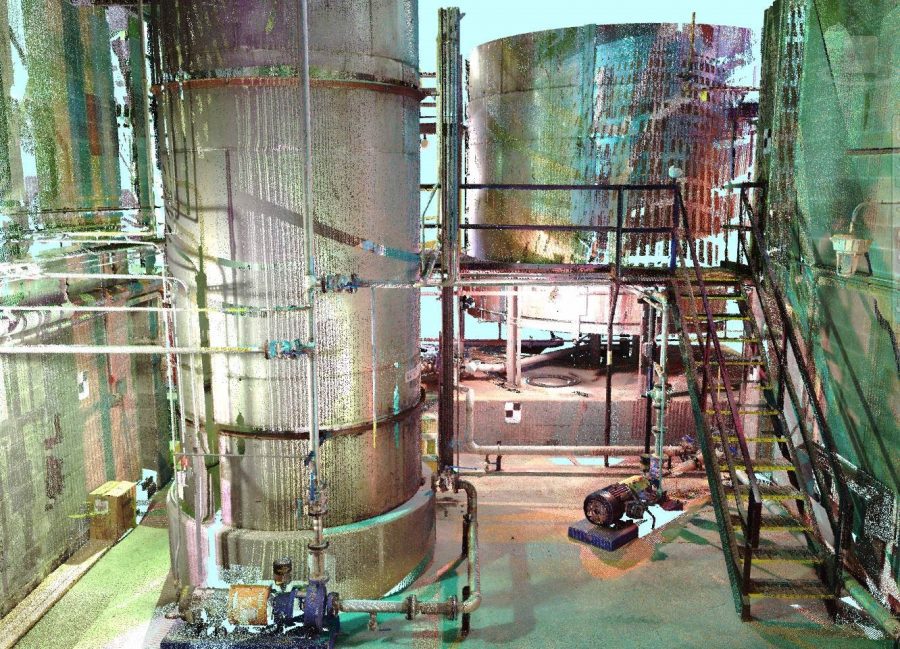
Once all of the large equipment is placed in the distillery, the mechanical and electrical interconnections can be completed. This will include pumps, piping, conveyors, power conduit, instruments, and control wiring. VITOK Engineers will have identified any potentially hazardous (explosive) areas for consideration in this aspect of the design. Any necessary electrical panel clearances or power disconnects will be designed into the system to meet all local, state and national Code standards.
At the end of the day, a distilling process will be functioning in the building. Coordination with the owner, architects, and the various construction crews will yield a result that is appealing to the eyes AND produces a quality product.
Link to Distillery Trail Content
